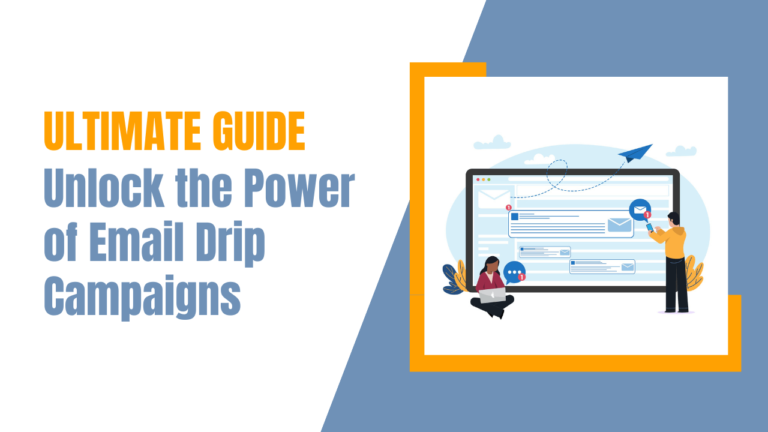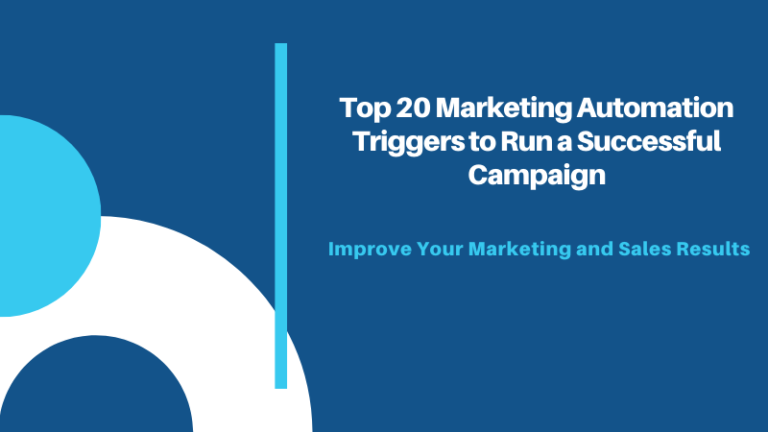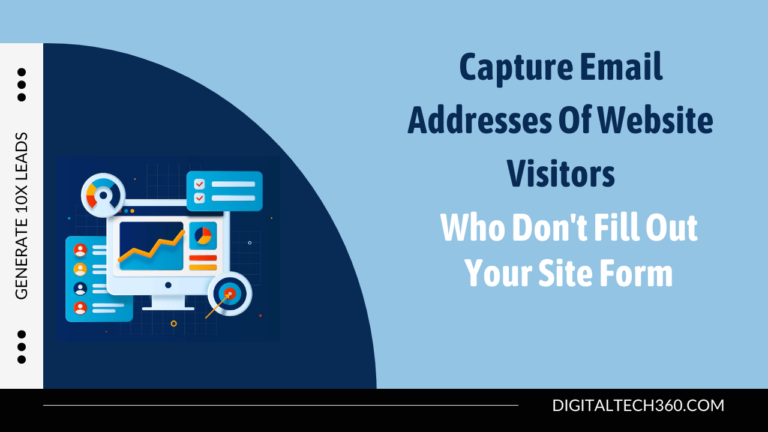Email marketing is one of the leading channels for B2B and B2C marketers to engage customers, lead generation, lead nurturing, converting subscribers into paying customers and generating repeat business. Email marketing provides a higher return on investment compared to any other channel.
What Is B2B Email Marketing?
B2B email marketing means promoting your product and services to only B2B companies. Here decision making, buying cycle, frequency, and timing differ based on business requirements.
What Is B2C Email Marketing?
B2C stands for Business to Customer. This is the business merchant model that sells direct to consumers, that is, to individual customers sells candylike you and me. An example would be an online store that sells individual clothing or a store that sells candy.
Top B2B and B2C Email Marketing Practices to Boost ROI
Today, you will learn the best B2B and B2C email marketing practices that grow your traffic and ROI.
1. Send Emails at the Right Time
It depends on the business type, industry, and country. But generally morning 8:00 AM – 12:00 PM works better for B2b marketer. Timing differs from business to business, for some business works morning and for some afternoon. And don’t send any campaign after 4:00 PM study shows there are high chances of getting a low open rate. Always experiment with your timing to get better results.
On the contrary, in the field of B2C, it is better to send in the afternoon at 2:00 PM or evening from 5:00 PM.
2. Best Day to Send Emails
Usually, Tuesday, Wednesday, and Thursday are the best days to send emails. If you are running one campaign per week then consider Thursday is the right day to send your emails.
If you are running a campaign daily, send a few emails on Monday and increase sending volume on Tuesday, Wednesday, and Thursday. On Friday don’t send any new emails but try sending follow-up emails.
But in B2C email marketing weekends work better, try sending on weekends and weekdays during lunch or evening time.
3. Stay Consistent with Email Schedule
Email marketing is not a one-time activity for promoting products and services. An important factor in marketing is consistency. Be consistent with your email marketing efforts.
Assume, if you are planning to send the campaign on Thursday at 10:00 AM. Then even the next campaign you should send at the same day and time. This helps your prospects to understand your email schedule. This will drive you more open and click rate.
4. Don’t Blast your Email List
Email blast or bulk emails it’s not working for any of the marketers. Because sending emails regardless of prospect choice, priorities, and needs becomes irrelevant and useless to prospects. Prospects don’t like unsegmented, untargeted, not personalized, and unexpected emails. It’s always better to personalize your content and segment your list to get greater results.
5. Target your Most Engaged Contacts
Provide more importance to most engaged contacts and keep them happy. If you want to provide special offers to your customer then target the most engaged contacts and those will easily convert.
6. Create an Email Drip Campaign
A drip campaign is the most important to educate your customer before buying any product or service. If your target audience is not converting then a drip campaign strategy will work for you. Send time to time valuable content related to your product and services.
7. Create Time-Sensitive Emails
Provide limited time for your customer to take action. You’ll get more clicks and conversions.
- Set a Deadline: Use words such as “ends tomorrow, 24 hours left
- Use Time-Sensitive Language: such as, “time is running out,” “last chance,” or “only one day left,
- Create Demand with Scarcity: e.g. “Get it before it’s gone,” “only 5 spots left,” or “While supplies last.
8. Storytelling Emails
Write an email like a story as you are telling your friend. This kind of email people trust and get more engagement.
9. Subject Lines
The subject is the most critical part of your email marketing. That’s what makes the reader click. Those few words matter a lot. Frame an email subject line that is attractive, sharp, and direct (preferably 4 to 6 words).
Best email marketing practices for a subjectline include asking a question, being specific, creating a sense of urgency, short and sweet.
You don’t want to look like you’re screaming like: “JUST NOW 50% off everything”
Instead, try “ 2 days left to close your cart with 50% discount”.
If you can customize the subjectline, this can help to increase the open rate by 22.2%. Test your subjectline with subjectline testing tools before sending any campaign.
10. Use A/B Testing
An A/B test involves creating different versions of a campaign and sending each version to a part of your list. The version that performs best can be sent to the rest of your list. A/B testing also helps you learn what works best with your contacts so that you can improve your email marketing over time. You can do A/B testing with content, subjectline preview text, and sender information.
11. Automated Campaigns
Schedule a series of emails automatically to be sent when certain criteria are met such as dates, events, or with the possibility of defining shipments based on the behavior that a subscriber had in a previous email campaign. For example, a birthday greeting, the welcome email, and blog updates via automation RSS. Read more about email automation here.
12. Personalize your Email Campaigns
Apart from data of the recipients in the subject or body of the message to create targeted and unique communication. Personalization emails also need to be focused on customer interest. Every day we receive several email marketing messages. Only personalized emails are read, while others are completely ignored. Create personalized emails and increase your open rate and clicks.
13. List Segmentation
Segment your contact list to send relevant messages to each person. Segmenting lists will allow you to organize and target your contacts specifically. For example, you can segment contacts who live only in the USA, only in California, or even in other countries. With this, you can send emails targeted only to the contacts referring to such segmentation.
There are many ways to segment list few are here: Geography, Persona, Organization Type, Industry, Job Titles, Seniority Level, Buying Frequency, Stage in the Sales Cycle, Page Views, Event Attendees and non Attendees, Call-to-Action Clicks, Opened and not opened, Form visitor and more.
14. Email List Hygiene
Cleaning up an email list to make sure you’re talking to active subscribers. Periodically cleaning the list will help you to improve the deliverability and sender’s reputation.
- Remove invalid emails (hard bounces)
- Monitor soft bounces
- Remove disengaged email addresses
- Removing duplicates
Cleaning email lists perform better, provide higher open and read rates, and certainly better returns rather than sending to a non-interested or non-existent audience.
15. Win Back Disengaged Subscriber
Acquiring a new subscriber takes a lot of effort, time, and cost. Contacting disengaged subscribers with re-engaging special offer campaigns and giving importance to them will give you better conversion than the new subscribers. Disengaged subscribers already know what you are offering and they are in a position to make a buying decision.
16. Provide more value to Loyal Subscribers
Loyal subscribers are your brand advocates. They promote your product by word of mouth and through social media. Giving rewards to your loyal subscriber is very important. You can plan campaigns specifically for loyal subscribers, such as pre-launch offer campaign, flexible payment option campaign, extend the trial period campaign, freebies campaign, discount offer campaign, cashback campaign, and reward point campaign, etc.
17. Add Social Media Buttons
The ability to allow your audience to share their favorite content with family and friends is one of the most powerful ways to expand your reach.
18. Clear and Compelling CTAs
A clear and compelling call to action can encourage subscribers to take the next step or perform an action. It should feel like a natural step to users. Once they read the content they should know what they need to do.
19. Consider the ‘From’ Name and Email Addresses
When you send a bulk marketing email, your email “From” name (the display name, also known as the email sender name) tells your recipients who sent them the message. Based on your sender name and email address subscriber will decide whether to open or ignore it.
You need to choose a name or title that will be memorable to your subscribers. In most situations, it’s much better to use a company or brand name over an individual person’s name.
20. Test Before Hitting Send
It is a best practice to check every single email before sending it to your subscriber, there should not be any excuses. Mainly there are two types of mistakes usually you see in emails.
- Human errors: missing words, spelling mistakes, added wrong list, preview text, from the name, typos, subject lines, CTA, landing page, wrong dates, broken links, or outdated info.
- Display errors: alignment issue, rendering issue, display issue based on email clients.
21. Don’t Purchase Contact Lists
Purchasing an email list looks like an easier option—just buy, import into the system, and send it. But sending emails to random people without having consent is against GDPR law. Many people may unsubscribe or mark you as a spammer because of not having permission to send. And most ESP’s do not allow purchase lists to import. Sending emails to the purchased list will damage your sender reputation and you will face delivery issues. So always avoid sending emails to the purchased list.
22. Don’t use ‘No-Reply’ in the Sender’s Email Address
No-reply in the sender name state that doesn’t reply to this email. Because this kind of email address is not monitored by the sender. Mainly no-reply email use for transnational email because the intentionally company doesn’t want to receive any emails. If you use no-reply in a regular campaign, subscribers will not have the option to reply to your email and there are chances of people starting to ignore your email.
23. Make Use of Preview Text
Preview text is a great opportunity to grab the attention of your subscriber. A short piece of content along with subjectline helps the subscribe to decide whether to open an email or not.
- Keep preview text short – preview text length should be between 40 to 140 characters
- Add main topic and buzzwords
- Add a sense of urgency call out
While creating the subject line you should also think about preview text and it should match with your subjectline.
24. Adding an Email Signature
Email signatures are a great marketing opportunity! Using email signature you can showcase special offers, news, conference details, booth details, book demo, and much more. Make use of email signatures effectively and you can easily generate them using a free email signature tool.
25. Keep the Main Content and Call-to-action Above the Fold
Above the fold, content is much more likely to get seen. Only a few people see content below the fold. Some people don’t even scroll down to see your call to action. In today’s world people just glance at the email, if your CTAs are above the fold there is a high chance of clicking your email.
26. Keep your Email 500-600 Pixels Wide
This is a standard size of your email template width. If you try to wider than 600 pixels, then your email template is not user-friendly. The user has to scroll wide to see your content. Nobody will take that much effort to see your email. So every time consider this best practice while creating an email template.
27. Include the Brand Logo in the Email Template
It is one of the best practices including a logo in your email template. A top left corner is a classic place for logos, whether it’s in the website or an email template. Most people tend to read the email left to right. You can also try placing your logo in the center.
28. Sync Emails to Landing Pages
Email and landing page should sync each other. Whatever information available in the email containing the same content should be available on the landing page. This provides a great user experience to your subscriber. And people get converted once they visit the landing page.
29. Keep Consistency in Email Design
Consistency in email design is crucial. Here’s a quick checklist of email design components for every email you should include.
- Add your brand logo
- Use your brand color
- View in browser option
- Use consistent fonts in the body
- Insert relevant links and CTAs
- Standardize email footer
- Email Signature
- Sender name
The subscriber can easily identify email by your email design. With consistent email design and a little bit of creativity, you can use email marketing as a successful channel to communicate with your audience.
30. Use Double Opt-in Contacts
There are two types of signup methods. Single opt-in and double opt-in.
- Single opt-in – If prospects fill the form or signup the form. he/ she becomes your subscriber.
- Double opt-in – If prospects fill the form or signup the form then he/she will get the confirmation email. Once prospects click on confirmation mail then they become double opt-in contacts.
Using double opt-in contacts will get verified email addresses and a better engagement rate. So use double opt-in contacts for every campaign you send.
31. Don’t Saturate your Subscribers
One of the most complex pieces of the email marketing puzzle is knowing how often you should contact your subscribers. If you do it a lot, they will unsubscribe; very little, and they will lose interest in your brand. You need to monitor unsubscribe numbers after each campaign and adjust your email frequency accordingly.
32. Follow Email Laws and Regulations
There are a number of different laws based on the country. In US CAN-SPAM, Canada the CASL laws, in the UK, PECR and in Europe, GDPR. Follow each of the rules and regulations to avoid legal penalties.
33. Give Attention to Email Deliverability
Always check email deliverability stats. Mainly inboxes delivery issues we face because of ISPs, throttling, bounces, spam issues, and sending bulk emails. Just check out 30 Effective Ways to Improve Email Deliverability.
34. Make Better Use of the Footer
Most ESP requires mandatory information in your footer such as office address, unsubscribe link, and copyright details. Apart from that, you can include a product page link, blog page, social media button, Forward to friend button, Hashtag, and many more.
35. Email Marketing Calendar
An email marketing calendar is an essential tool for planning, scheduling, and organizing your content and sending dates to keep your strategy on track. Create an email marketing calendar to keep everything organized.
36. Give Subscriber Options for Email Frequency
Provide a subscriber flexible option whether a subscriber wants to receive an email daily, weekly, bi-weekly, monthly, or quarterly. According to that plan your campaign. It reduces your unsubscribe and disengage rate.
37. Include Alt Text to Images
Adding alternative text to Images is a crucial part of email accessibility. Most of the time users can not see your image on an email, that time having an alt text tag will help to understand the content of the image.
38. Include Images in Email Template
Pictures can be a great way to set the tone and to pique readers’ curiosity. When adding images, follow these guidelines:
- Use only .jpg, .gif, or .png formats.
- Use only letters, numbers, underscores, and hyphens in the file name
- Use image files smaller than 500 KB for best results, even though the limit for each uploaded image is 20 MB.
- The resolution limit for images is 60 MP (megapixels).
39. Style of Email Template
Keeping your style simple allows readers to focus on your content and your message. Here are some suggestions:
- A light-colored background with dark text is generally easier to read.
- Use a dark color to highlight your call to action.
- Use default and standard fonts
40. Mobile Friendly
Email design should be mobile-friendly. Nearly 53% of people use a mobile device to check an email. Make sure that all of your email campaigns are mobile-friendly to increase engagement and clicks.
41. Add Links to your Text
Instead of having a clear CTA button, you can add links to your text which is more actionable while reading your content. But don’t include too many links to your emails.
42. Use Valid URL
Make sure you’ve included valid URLs in your campaign. It is more prudent to avoid shortened URLs.
43. Welcome Email within 24 hours
Once the subscriber fills out the form immediately send a welcome or thank message. Do not delay sending emails, subscribers might lose interest in your product and services.
44. Study your Competitors
Studying competitors will give you enough campaign ideas and strategies. But don’t try to copy everything. Always compare your email with competitor email and try to change or tweak it accordingly.
45. Don’t Use Attachments
Never ever use attachments in your email. If you’re sending more than 150 emails per day. Then you should not consider adding attachments. Instead, you can use the link and direct it to your website.
46. HTML and Plain Text Should Match
Include HTML as well as plain text in the email. This is the best practice of email marketing. And both versions should match each other. Users can see both versions based on the email client setting.
47. Resend Not Opened Emails
You can maximize your email campaign engagement rates by resending non-openers with different subject lines or content. This gives you a second chance to engage your contacts.
48. Industry Trends
Always keep an eye on Industry trends. Understanding industry trends will help you write better content and get more traffic to your website.
49. Address your subscriber by their First Name
Collect the subscriber’s first name so you can address them with their name. Instead of saying hello, it’s always better to use personalized tokens.
50. Unsubscribe
Make sure the Unsubscribe option is visible and easy to use. Allowing people to unsubscribe is mandatory, as well as being a smart strategy. People do it for a variety of reasons and not necessarily because they don’t like the content.
Also, if the unsubscribe link is difficult to see, it may be reported as spam as a method of unsubscribing, which could increase the likelihood that future campaigns for other subscribers will be marked as spam.
51. Spam Tests
Run spam tests for subject lines and email content. Use Email Spam Tester to ensure your emails get to the Inbox of your subscribers.
52. Keep Copy Short and Simple
Keep your email copy short and sweet. Write content to the point, people like straight forward emails.
53. Focus on a Single Objective
Don’t include everything in the email content. One email should have one object and write content specifically.
54. Add Forward to Friend Buttons
Adding forward to friend buttons in your email template helps subscribers to forward the piece of content to friends or colleagues.
55. Get Added to the Safe Sender List
To avoid getting caught in the spam filter, include a link in every email asking subscribers to add you to their safe sender’s list.
56. Use RSS feed
Using RSS feed you can create blog posts or any website content into email content. And you can use the latest content to send to your subscribers.
57. Lead Scoring
Lead scoring technique used to identify those who are likely to purchase, qualifying, and prioritizing automatically or manually. Generally, the ranking of leads comes from two scores: profile (data such as position and segment) and interest (information such as access and content consumed).
58. Authentication
Please update your SPF, DKIM, and DMARC record, it helps you to authenticate your domain and get you the best email deliverability.
- SPF – Sender Policy Framework
- DKIM- DomainKeys Identified Email
- DMARC – Domain-based Message Authentication, Reporting & Conformance
59. Warmup (IP and Domain)
It’s important to warm up your IPs and domain before sending any new campaign. Good sender reputation increases inbox delivery rate. Here is an article How to warm-up an IP address and Domain?
60. Track, Analyze, and Review
After sending a campaign, review its performance, and compare it to previous campaigns. Over time, you will learn what works best for your audience.
Conclusion
There are almost three billion email users in the world, checking almost 300 billion emails a day. With an average return on investment of 122%, email marketing remains one of the smartest and most efficient tools available to marketing teams.
But if the average consumer receives more than 70 emails per day, marketers have to use their creativity to eliminate the noise from the inbox. Email marketing is not a lost cause. It’s an opportunity for creative marketing to emerge, the kind of marketing that draws people to this field of work in the first place.
Carefully consider your segmentation, timing, email design, include a clear and persistent call to action, test, and improve your campaigns. Email marketing will increase, your number of subscribers and conversions certainly only if you follow these and other well-proven practices.
If you know about some other effective email marketing tips that we have missed, please tell us in the comments.







